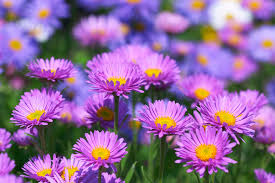Anyone who knows me also knows that I’m a huge plant person. In fact, today I set out several plants for free to give away to my neighbors. What you probably don’t know about me is that I have worked in several florist shops and garden centers. I love plants, and probably have near forty now (downsized from 120, because I bring them in during the winter, and here in Colorado, that is from mid-October to mid-May, with stormy, hailstorm-ridden days mixed in, so my tiny house can’t accommodate). Anyway, I hope you enjoy this guest post.
10 Types of Flowers That You Love to Grow In Your Home Yard
Flowers give us joy, they have a wonderful aroma, and come in a wide variety of shapes, sizes, colors, and fregrances. Everyone can choose the varieties of plants that suit thier personality and decorate their home. Whether you want them in indoors or in the garden, flowers add a lot of colors and rich beauty, and can also make the simplest space warm and inviting.
Bigger is generally better, particularly with regards to Flowers. Get your hands on varieties of plants you definitely know and love with these 10 plants reproduced to deliver enormous and productive flowers. Put a couple of these supersized flowers in your yard and give your neighbors something to discuss.
Asters

Asters produce lovely daisy-like flowers in a scope of hues and, contingent upon the species, are ice lenient. So as to maintain a strategic distance from sicknesses, don’t plant yearly asters in a similar spot a seemingly endless amount of time after year. Ideally, plant in either full sun or in the complete shade in wet very much depleted soil.
Incredible Hydrangea
Durable stems bolster enormous summer-sprouting white flowers. The almost 12-inch blossoms start green, develop to white and afterward blur back to green later in the season. To energize new development and blooming, prune this bush in pre-spring. Why we love it: Unlike other huge hydrangeas, Incrediball won’t flop finished, considerably after a solid downpour.

Red Leaf Begonia

While most begonias flourish in conceal, the red leaf assortment can endure daylight, as well. Its waxy beet-shaded leaves and pink-or white-toned buds appear throughout the entire summer in both sticky or dry conditions, making it the most obliging alternative for the normal yard. Simply putting down roots for your nursery? Plant these begonias in a bed or box on the north or east side of your home underneath a huge tree or secured porch, since this area will make an upbeat trade-off of sifted daylight. Feed red-leaf begonia each other week for relentless blossoms in the late spring.
Bigleaf Magnolia

In spite of the fact that this magnolia is viewed as a medium-size tree at 20 to 40 feet, it has the biggest leaves and flowers of any North American deciduous species. The surrenders develop over to 3 feet in length and are green on top however have fluffy silver-dim undersides. Due to the leaves’ size, solid breezes may harm them, so plant the tree in a shielded area in sun or fractional shade. Why we love it: Take a sniff! Fragrant white flowers are 8-to 12-creeps across and fly in summer. A very close look uncovers wonderful purple communities.
Evergreen

Evergreens give truly necessary shading vulnerable climate months, regardless of where you live. With a large number of varieties, you’ll see one to adore! Peruse the plant tag or depiction to figure out how enormous they’ll stall out with one that is swarming the house or different plantings in a couple of years. In case you’re lacking in space, search for overshadow varieties that won’t get in excess of a couple of feet tall and wide.
Marigold

The nice marigold, which sprouts is striking oranges and yellows, is a brilliant expansion to any garden. Maybe the best part about the marigold is its lighthearted nature. The flowers flourish under the sun, however, they likewise wouldn’t fret a touch of mid-evening conceal. Marigold additionally isn’t finicky about soil types. Additionally, the flowers are advantageous to your nursery: marigolds discharge thiophenes into the dirt from their root frameworks, executing nematodes that cause root-tie.
Climbing Vine

Vines that climb over a fence, lattice, or arbor include a layer of appeal and enthusiasm to any garden. Blossoming vines likewise draw in entirely, little pollinators, for example, hummingbirds and butterflies. Think about a cardinal climber, clematis, passionflower, honeysuckle, and bogus hydrangea. Add some storage buildings or Metal Buildings sheds to get some space for stuff and sheds for shed plants.
Double White Angel’s Trumpet

Get a seat and settle in close to this current blessed messenger’s trumpet each night. The sweet aroma from only one plant is sufficient to scent the entire backyard. Pick a radiant spot for the bush, and plant it in very much depleted soil. Be careful: All pieces of the blessed messenger’s trumpet are destructive to people and pets. Why we love it: By late-summer, upwards of 100 unsettled twofold blossoms hang from stems secured with tobacco-like foliage. Additionally, the 10-inch flowers are deer-safe.
Echinacea

You may know Echinacea as an invulnerable framework boosting natural enhancement, however for veteran cultivators, it’s an intense yet exquisite perpetual that requests little in return for its eye-getting, daisy-like sprouts. Local to the grasslands and open woods of the Midwest, Echinacea stands up well not exclusively to cool fronts and ruinous nursery creepy crawlies yet additionally to times of expanded dry spell. This means, If you neglect to water for half a month during a dry summer, the cone-molded, pink-petaled blossoms keep on looking as show-halting as could be. Truth be told, however Echinacea blossoms for a great part of the year—from late-spring to the main ice of winter—it stays a wonderful outskirt plant even once its flowers fall.
Lavender

Adored for its energetic purple flowers and crisp, quieting aroma, lavender courtesies hot, dry conditions likened to those of its local district, the Mediterranean. That being the situation, for stateside plant specialists, there are two straightforward keys to progress. One, make certain to plant the lasting in a recognize that gets at any rate six hours of direct sun every day. Two, don’t overwater. Give lavender a long, careful drench, yet just when the dirt feels practically dry to the touch (when a week or two times per month, climate depending). Specialists likewise suggest pruning in the spring, not long after the principal flowers, so as to support new development and help the plant keep its brand name shape.
Author Bio:
Kevin Brown
Kevin writes for topics like Home Improvement, Kitchen decor, Garden, or travel-related topics additionally; he has a passion for the metal building industry for more than ten years, Kevin has become an experienced building specialist in this industry. His goal is to help people with her vast knowledge to assist them with her best suggestions about different DIY buildings such as garages, Metal Carports, utility buildings, and commercial structures.

